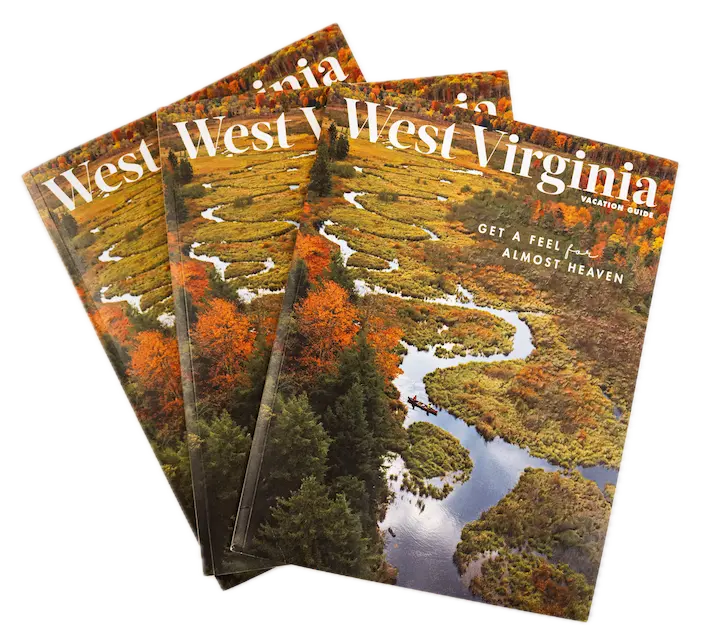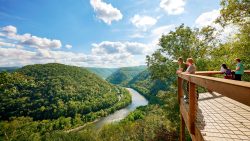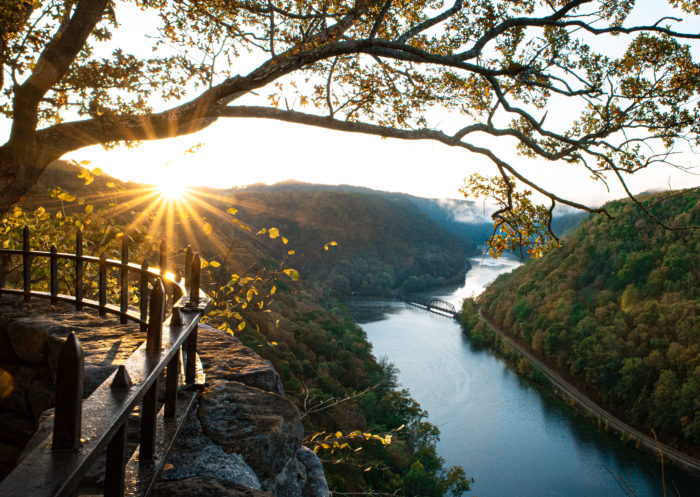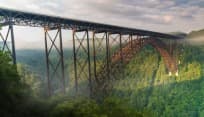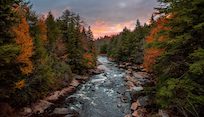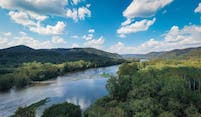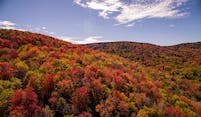7 natural wonders in the National Parks and beyond
The hills and hollows of West Virginia hide an amazing number of natural wonders, from craggy peaks to subterranean caves. Some are in vast national parks, and others on small parcels of private land, but they are all spectacular and special in their own way.
1. Cranberry Glades
In Appalachia, “glades” are big, open bogs and meadows that provide biodiversity and clean water for the rivers and creeks. The Cranberry Glades in Pocahontas County are the granddaddy of them all. This massive complex of wilderness and backcountry contains more than 50,000 acres of roadless terrain— the largest wilderness east of the Mississippi.
Beyond the developed boardwalk, through the bogs (which contain quite a few carnivorous plants!), the best activities are remote hiking, backpacking and fishing. Find shelter in scattered lean-to’s along the Cranberry River. This is also an excellent cross-country ski destination, but take care: this remote region can often plunge well below zero degrees in the winter.

2. New River Gorge National Park and Preserve
The New River runs through Appalachia’s own little version of the Grand Canyon, near the small and happening town of Fayetteville. The New River Gorge is 900 feet deep, with the world-class rock climbing of Endless Wall at the top, world-class whitewater rafting at the bottom, and a wild jungle of rhododendrons, ferns, and waterfalls in the middle.
A great intro to the New River Gorge is a drive across the 3,030-foot arch bridge of Highway 19, then a right turn to head down into the bottom of the gorge. If you want to get out of the car, hike the Endless Wall or Long Point trails for some amazing views, or check out the abandoned mining towns of Kaymoor or Nuttallburg.
Need to kick the adventure up a notch? Consider a climbing session with New River Mountain Guides, or a whitewater trip with one of the local outfitters. However your day goes in this natural playground, you can always rest assured that there will be excellent food, drink, and nightlife on either side of the gorge at the Burrito Bar, Mackies, Pies and Pints, or Secret Sandwich Society.
3. Blackwater Falls
Don’t be put off by the name– this river’s “blackwater” is colored by natural tannins from fallen conifer tree needles. The centerpiece of this Blackwater Falls State Park is a photogenic 50-foot cascading waterfall on the Blackwater River, which empties into 8 miles of canyons.
Though the park is fairly developed with wooden walkways, a restaurant and lodge, there are also plenty of outdoor activities here, too. It is particularly spectacular in the winter. The falls freeze into crystallized chandeliers, and the cross-country ski trails and sledding runs are groomed. If you want to check out some of the East’s best resort skiing, Canaan Valley is only 20 minutes away.

4. Seneca Rocks
Craggy peaks are not just for the Rockies out west– imposing fangs and fins of quartzite make Seneca Rocks one of West Virginia’s most striking and iconic landmarks. Rising hundreds of feet above forested mountains and towering over the South Branch of the Potomac River, these complicated summits are only accessible by technical rock climbing routes. Before hiking to the base of the peaks or climbing them with a local mountain guide, check out the Seneca Rocks Discovery center to learn about the natural and human histories of this area.
This section of Monongahela National Forest is quite remote. You’ll probably lose cell reception. However, after a day of hiking or climbing you can still enjoy a pizza at the Front Porch restaurant in the town of Seneca Rocks, and stay in a campground, room, or cabin at Yokum’s Vacationland.
5. Lost World Caverns
While most of West Virginia’s above-ground rock is sandstone, the state also has more than its share of limestone caves hidden below the surface. Lost World Caverns, located just off of I-64 outside Lewisburg, is one of the biggest and most accessible.
An hour-long tour through this privately-owned cave will take you along lighted walkways and stairways. You’ll meander through complexes of stalactites and stalagmites as you descend 120 feet into the earth. Perhaps the highlight of this tour is the “Snowy Chandelier,” a multi-tiered stalactite that is one of the world’s largest. For those who wish to veer off the beaten path, a four-hour “wild tour” will take you through mud, passages, and up and down steep drops.
6. Ice Mountain
Yes, the name of this Nature Conservancy Preserve/National Natural Landmark in the far eastern Panhandle is straight out of a Game of Thrones episode. And yes, there is literally ice within this mountain. For some reason, geology has caused cold air to flow through cracks and crevices in the mountain’s talus base, creating year-round ice flows and cold air vents. Historically, this was an ice source for locals in the days before refrigeration.
The cold temperatures around the mountain base have created plant growth that is more subarctic than southeastern; a truly unique ecosystem in Appalachia. Due to the sensitive biodiversity here, the Nature Conservancy allows only small, guided groups, and suggests reserving space for these visits 3 weeks in advance.
7. Berkeley Springs
This natural wonder is a bit of an anomaly on this list. It’s not in a remote corner of the backcountry, but rather right in the middle of the town of the same name. However, Berkeley Springs is truly a natural and historical wonder, with more than 2,000 gallons of mineral-laden, 74-degree water gushing out of 5 different sources per minute. The springs were used therapeutically by colonists since at least the mid-1700s, when a young George Washington surveyed their surrounding lands and soaked in their pools.
In 1930, a permanent bathhouse was built to house the springs’ water and ease visitors’ use. Today, visitors can soak in the bathhouse, swim in another large outdoor pool, or golf, hike, and boat around the area’s surrounding mountains.
How many of these wonders have you seen?
Explore more mountain marvels >
This post was last updated on March 1, 2022
